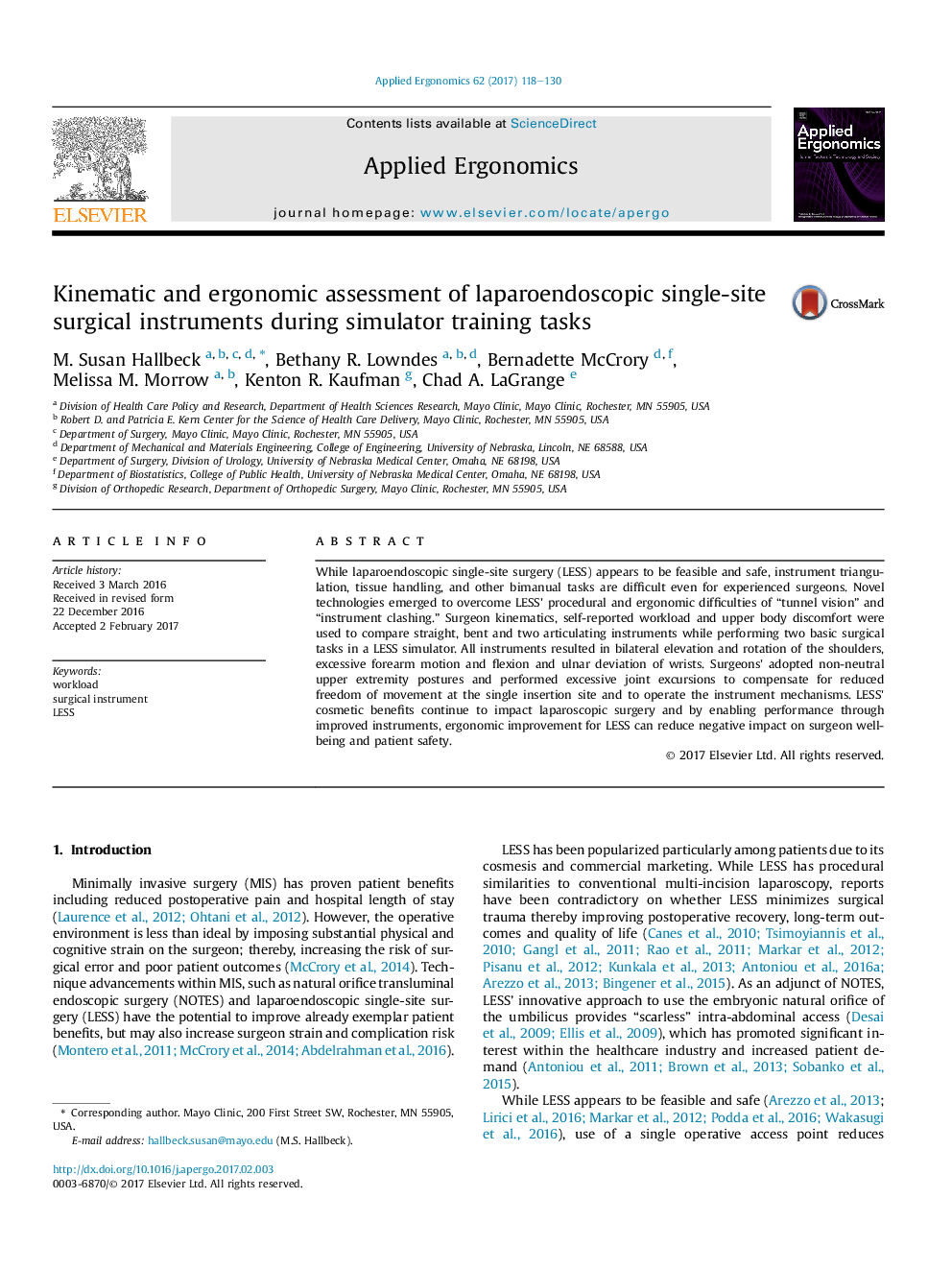| Article ID | Journal | Published Year | Pages | File Type |
|---|---|---|---|---|
| 4972046 | Applied Ergonomics | 2017 | 13 Pages |
Abstract
While laparoendoscopic single-site surgery (LESS) appears to be feasible and safe, instrument triangulation, tissue handling, and other bimanual tasks are difficult even for experienced surgeons. Novel technologies emerged to overcome LESS' procedural and ergonomic difficulties of “tunnel vision” and “instrument clashing.” Surgeon kinematics, self-reported workload and upper body discomfort were used to compare straight, bent and two articulating instruments while performing two basic surgical tasks in a LESS simulator. All instruments resulted in bilateral elevation and rotation of the shoulders, excessive forearm motion and flexion and ulnar deviation of wrists. Surgeons' adopted non-neutral upper extremity postures and performed excessive joint excursions to compensate for reduced freedom of movement at the single insertion site and to operate the instrument mechanisms. LESS' cosmetic benefits continue to impact laparoscopic surgery and by enabling performance through improved instruments, ergonomic improvement for LESS can reduce negative impact on surgeon well-being and patient safety.
Keywords
Related Topics
Physical Sciences and Engineering
Computer Science
Human-Computer Interaction
Authors
M. Susan Hallbeck, Bethany R. Lowndes, Bernadette McCrory, Melissa M. Morrow, Kenton R. Kaufman, Chad A. LaGrange,
